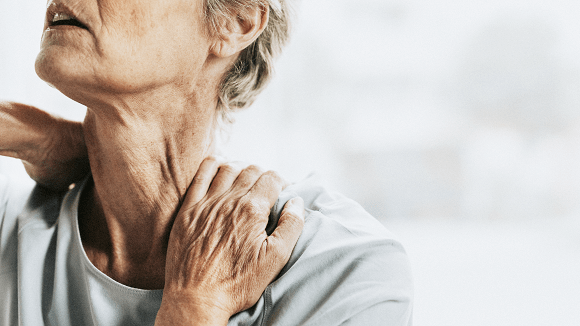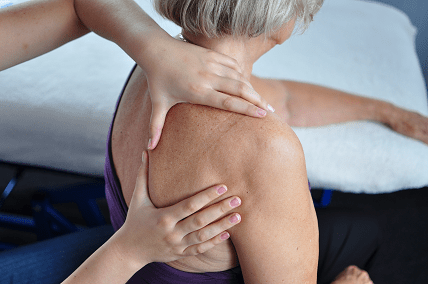Online Enquiry Form

Overview
Shoulder arthritis, or osteoarthritis of the shoulder, typically occurs in those over 55’s who have been suffering shoulder pain on and off for many years. The pain eventually becomes so great that it:
- Becomes a constant, hot, joint pain.
- Limits movement in the shoulder joint.
- Affects the ability to sleep.
This type of arthritis, also known as degenerative joint disease, is a condition whereby wear and tear damage is caused to the shiny surface of the joint. Since the body can’t repair damaged joint surfaces, instead, it reacts with an inflammatory response which leads to ongoing destruction of the joint and the muscles, tendons and ligaments around it. Early onset arthritis often begins after traumatic injury, disrupting the normal joint surface sooner than normal wear and tear. Shoulder dislocations, broken shoulders and rotator cuff tears which affect the shiny surface of the shoulder joint, may also cause early-onset arthritis.
Rheumatoid arthritis or RA, is an autoimmune condition suspected to be triggered by certain viruses or bacteria. RA affects joints by eating away the joint surface, disfiguring the shape of the joint and causing joint swelling, tenderness, warmth and loss of movement.
Symptoms
Depending on the length of time someone has suffered shoulder arthritis, they may experience the following symptoms:
- Constant shoulder pain during the day.
- Shoulder pain at night causing disruption to sleep.
- Increased pain and tender with touch.
- Loss of shoulder movement.
- Loss of shoulder strength.
- Increased shoulder stiffness.
- Depression.
Causes
Shoulder arthritis is the body’s reaction to damage of the shiny smooth surface of the shoulder joint. Arthritis itself causes further joint damage and the deterioration of surrounding structures. In osteoarthritis, excessive wear and tear causes damage to the joint surface, often by undertaking shoulder activities that are repetitive, heavy loaded or employing poor posture or poor technique. Joints affected by this kind of condition are usually isolated to one side of the body. Arthritis of the shoulder may also get names like post-traumatic arthritis, avascular necrosis and rotator cuff arthropathy.
A traumatic event such as shoulder dislocation, fractures and rotator cuff tears damage the joint surface leading to the early onset of arthritis or acceleration of the current arthritis. Different to osteoarthritis, rheumatoid arthritis or RA, is an autoimmune disease that doctors believe is caused by genetic susceptibility towards certain environmental factors such as infection by viruses or bacteria which may trigger the disease. Once triggered, RA slowly attacks the lining of joint surfaces, often affecting joints on both sides of the body.
Shoulder arthritis can also be caused by sports injuries and workplace injuries.

Diagnosis
Moderate Shoulder Arthritis
Moderate shoulder arthritis is typically suffered by patients under the age of 55, who have had shoulder pain on and off for many years, made worse by movement and lying on the shoulder. Some clicking and cracking may be associated with various movement tests. Radiological studies, xray and MRI will confirm the severity of the condition.
Severe Shoulder Arthritis
Severe shoulder arthritis is a serious condition, suffered by patients over 65, who have had constant shoulder pain for many years made worse by movement and lying on the shoulder. Grinding, clicking, and cracking is associated with shoulder movement. Radiological studies will confirm the severity of the condition.
Treatment
Treatment of shoulder arthritis should always begin with a thorough diagnosis of your condition to understand the severity of the condition in the context of your age, your sport, your work and your life.
Non-Surgical Treatment
Moderate shoulder arthritis may be treated non-surgically using:
- Rest.
- Pain and anti-inflammatory medication.
- Modification of activities causing wear and tear.
- Physiotherapy treatment for improved strength, better posture and function.
However, depending on the functional requirement of your shoulder, like social sporting activities like golf or tennis or work activities like painting, you may require treatment that delivers a greater effect and so surgery may be right for you.
Surgical Treatment
Surgical treatment for shoulder arthritis should be considered in patients who have severe night pain that is affecting their sleep and loss of function affecting their activities of daily living and the quality of their life There are different surgical operations available to suit your age and physiology:
Shoulder Hemiarthroplasty
This surgical procedure restores the shape of the humeral head (typically 55-65 year olds). Hemi (half) arthroplasty (joint replacement) is the least traumatic of shoulder replacements, where only the joint surface of the upper arm is replaced with a small prosthesis. Bone quality of the upper arm and shoulder is generally very good and removing only the worse surface of the joint spares additional trauma from surgery.
Total Shoulder Replacement
This surgical procedure replaces the normal anatomy of the shoulder (typically in 65-75 year olds). Total shoulder replacement requires the surgeon to take away both sides of the shoulder joint, in preparation for the new prostheses. A total shoulder replacement is a preferred procedure in patients with arthritis who still have an intact rotator cuff, however, it is quickly becoming less popular over reverse total shoulder replacements, which are achieving quicker recovery times and better longer-term results.
Reverse Total Shoulder Replacement
This surgical procedure replaces and reverses the normal anatomy of the shoulder (typically in >75yrs). Reverse Total Shoulder Replacement requires the surgeon to take away both sides of the shoulder joint, in preparation for a prosthesis that reverses the mechanism of the shoulder so that the ball becomes the socket and the socket becomes the ball. Patients do not require a rotator cuff for a reverse prosthesis and so in aging populations where rotator cuff injury is common, this is a good choice of prosthesis.

Post Operative Rehabilitation
You will achieve the best surgical outcome if you follow up surgery with a matching course of rehabilitation. Following surgery, Dr Gupta will outline the most appropriate rehabilitation protocol for your physiotherapist to follow and communicate with your healthcare team to ensure that you receive the best post-operative treatment.
Please contact our friendly team on 02 9687 8344 or make an online enquiry here.

Dr Manish Gupta | MBBS FRACS FAOrthoA
Dr Manish Gupta is a renowned expert surgeon in the field of orthopaedic surgery specialising in upper limb including shoulder, elbow and wrist.